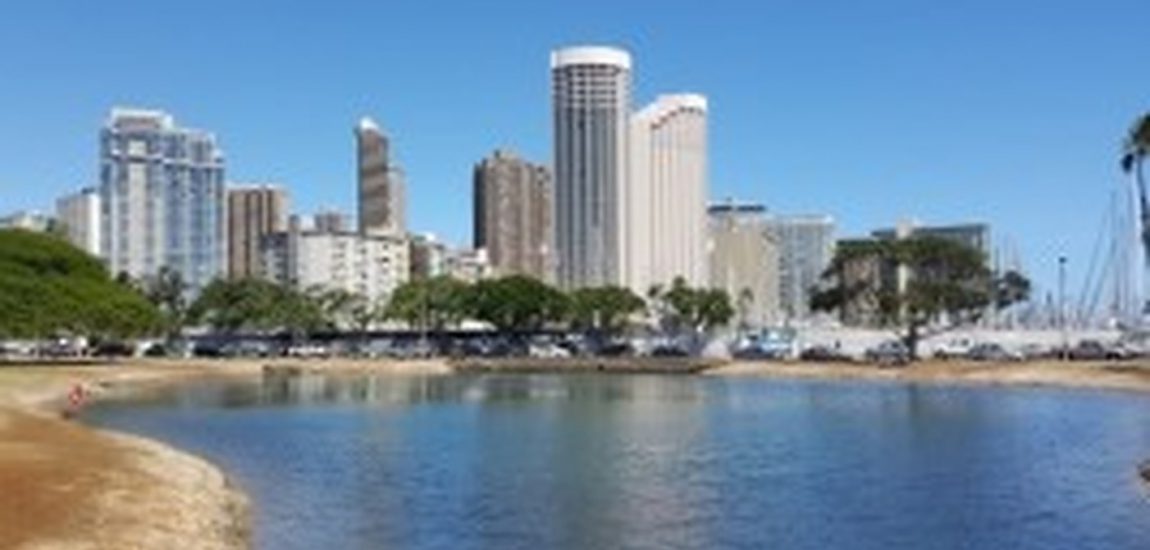
Astronomy in the State of Aloha
“Aloha!”, that’s the first thing people say to you on Hawai’i, and that’s what you answer them.
While doing that, fear not about being a guest on these islands. All people are minorities here and there are only a few thousand native speakers of the Hawai’ian language. Located right atop of a geological hotspot, the 137 islands of Hawai’i represent a big melting pot. Here, you can meet people from the entire pacific rim and even from all around the world. These people decided to live the Hawaiian way of life, the so-called “spirit of aloha”.
This spirit of aloha was present throughout the entire International Astronomical Union (IAU) XXIX General Assembly that took place in August in Honolulu on the island of O’ahu. This conference is a triennial event that lasts for two weeks and brings astronomers and planetologists from the entire world together. And, yes, at this meeting Pluto was downgraded to a “dwarf planet” nine years ago.
The General Assembly includes a substantial and attractive scientific programme. This usually comprises two series of three Symposia each lasting for several days, and scheduled during the first and second weeks, respectively. Fifteen to twenty more specialized “Focus Meetings” are also held, with up to five topics running in parallel. In addition, two full days are reserved for Division Meetings, with no overlap with the general program.
Small bodies, in particular the dwarf planet Ceres and icy moons represented very important topics of the IAU XXIX General Assembly (Symposium IAUS 318 and Focus Meetings FM 15and FM 9). Here, I could present results of my work in front of an audience which comprises probably the greatest possible number of scientists from my field of research. I contributed to the scientific programme a talk about my newest numerical models of the accretion and internal evolution of Ceres and two posters that dealt with the evolution of the parent body of the Acapulco and Lodran meteorites and with the modelling of the differentiation of ice-silicate asteroids.
Besides a constant and prolific exchange with other delegates (a total of almost 5000), the conference offered an Opening Ceremony with Polynesian dance show, Young Astronomer’s Luncheon, Exoplanet naming ceremony, Honolulu City Orientation tour, and even a possibility to book a trip to an exoplanet in the Exoplanet travel Bureau.
The Honolulu Orientation City Tour took me to the most recognisable landmarks of O’ahu, such as the Diamond Head Crater, the Nu’uanu Valley Rainforest and Nu’uanu Pali Lookout, the Punchbowl Cemetery, etc. Our tour guide was representative of the local diversity, being of Hawaiian, Chinese, Portuguese and Irish ancestry.
Besides the local vegetation and the wildlife, like the cypress and the banyan trees, there is a lot of introduced species, like the chicken (introduced by the Tahitian settlers that settled here more than 1500 years ago), or the cellular “palm trees” introduced recently and engineered to blend in.
Less than thirty years after the most unfortunate event involving the death of captain James Cook, the king Kamehameha I united the islands through a series of hard fought battles and established the Kingdom of Hawai’i in 1810. Hawaiian monarchy was one of the most modern and progressive monarchies in the world. The king Kalakaua, for instance, introduced islands’ first telephone and electric illumination in his palace in 1886, several months before the White House. While the Queen in London still dumped the bucket, King Kamehameha IV installed flushing toilets, so, according to our tour guide, Hawai’i had the first “Royal flush”.
On the Hawaiian islands you can find a lot of contrasts: Waves and mountains; palm trees and pines; rain forest and sand; native culture and modern science; the “crash site” of the Oceanic Flight 815; and soon, the Thirty Meter Telescope (one of the Extremely Large Telescopes) which will be (hopefully) built atop of the dormant volcano Mauna Kea, the largest mountain of the Big Island. “Hopefully”, since there are ongoing protests and demonstrations against the telescope and still no compromise with native activists for whom Mauna Kea is the most sacred mountain of their religion.
These two weeks on O’ahu was a very inspiring and enriching time for me, with regard to both science and pleasure.
My participation in the IAU GA promoted scientific exchange and networking with colleagues, establishing contacts with potential cooperation partners, and pointed me to new ideas and research approaches. The newest results of the current space missions presented at the IAU GA provided constraints for my numerical models. Such an informative meeting will not take place in the next 2-3 years, so I consider myself very fortunate for being able to participate. The conference offers, in addition, an opportunity to publish the conference contributions in its proceedings. Three publications based on my contributions are under review now. In general, I expect a long-lasting effect of this meeting on my research. Based on my impressions, I can recommend this conference for active astronomers and planetologists without any reservation and I’m deeply thankful to the EAG for covering a substantial part of my travel and conference expenses through the Early Career Science Ambassador Programme.
“Mahalo!”, that’s what Hawaiians say to express thankfulness, appreciation, and gratitude as a way of living.
About the author

Wladimir Neumann is a postdoctoral researcher in the department of Planetary Physics of the Institute of Planetary Research at the German Aerospace Center (DLR) Berlin. He obtained his doctorate at the Westfälische Wilhelms-Universität Münster in close cooperation with the German Aerospace Center (DLR) in Berlin. His PhD study dealt with numerical calculations of the thermo-chemical evolution of rocky planetesimals and on the implications for the bodies observed today (such as the asteroid belt members). He performed numerical studies on the process of chemical differentiation and accretion of planetesimals in general, as well as on the evolution of particular asteroids, such as Lutetia, Vesta, and Ceres. His current research is focused on the thermo-chemical evolution of Ceres and ice-silicate bodies, such as the Kuiper belt objects and icy moons.
